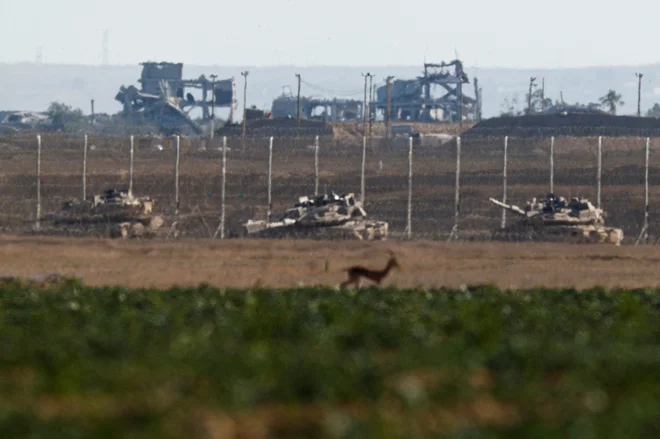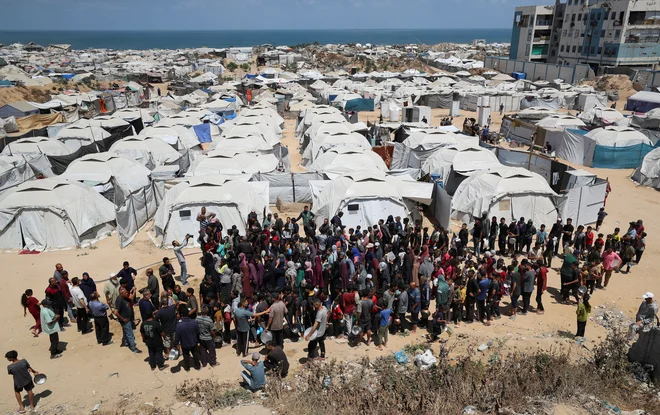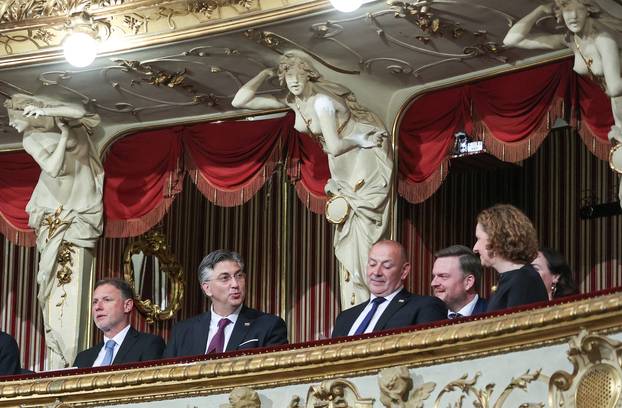Points for an unforgettable excursion known only by locals
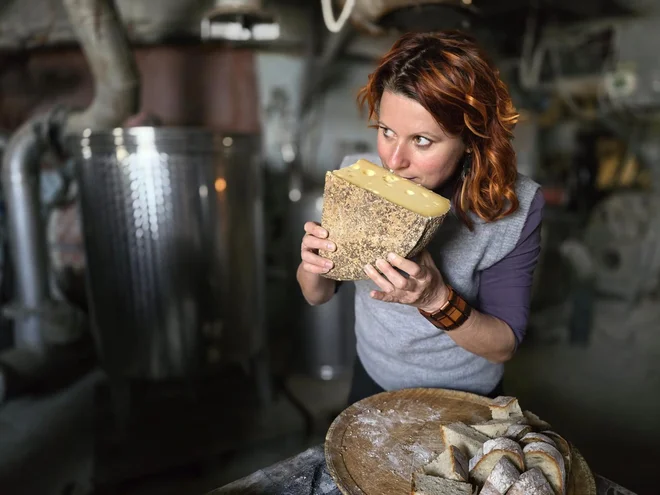
Two places, separate but connected, two casual guides: Marjana Grčmaneditor of the show on Better on Television Slovenia and President of the Society of Tourist Journalists of Slovenia, and Manca Tersinica native: Born in Nova Gorica, now lives a shot away – but at the same time in another country, in Stara Gorica – and is an assistant our most exposed chef at Franko House.
Marjana Grčman Photo: Stojan Femec
Asked if there are any sights in both mountains, which others do not know enough, but they are looking forward to the people here, Manca Tersinic initially doubts – these places are not an unwritten sheet. Then, during the conversation, it turns out that there are some points that may mean to the locals – a little more.
Let’s say: the first is unusual and lifelong. In the former railway tunnel under Kostanjevica in Novi Sad, which is today a pedestrian, high on the moist stone wall of the southern entrance, perhaps the most beautiful memorial plaque in the world, with the inscription here we loved, you and me, completely naked. No one knows who and when he set it up, says the interviewee, much less, whether they were really involved. The locals have always adored her, they have legends about her and smile every time they go by. It enters from Erjavčeva Road, the tunnel leads to the current track of the railway, and on the other side of the hill leads the path further right along the border.
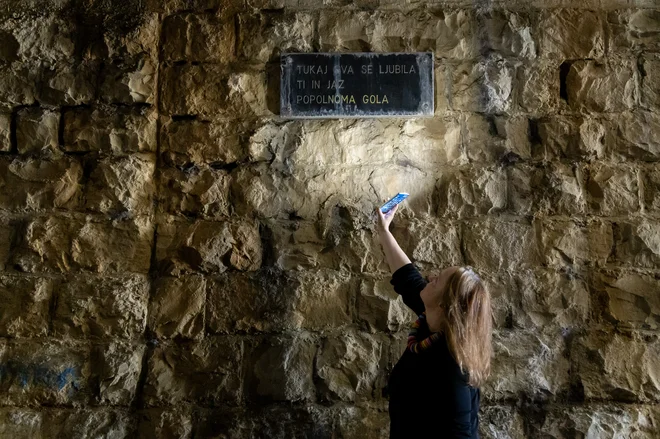
A landmark that is known only by locals: the fondest memorial board in the world .. photo: Voranc Vogel
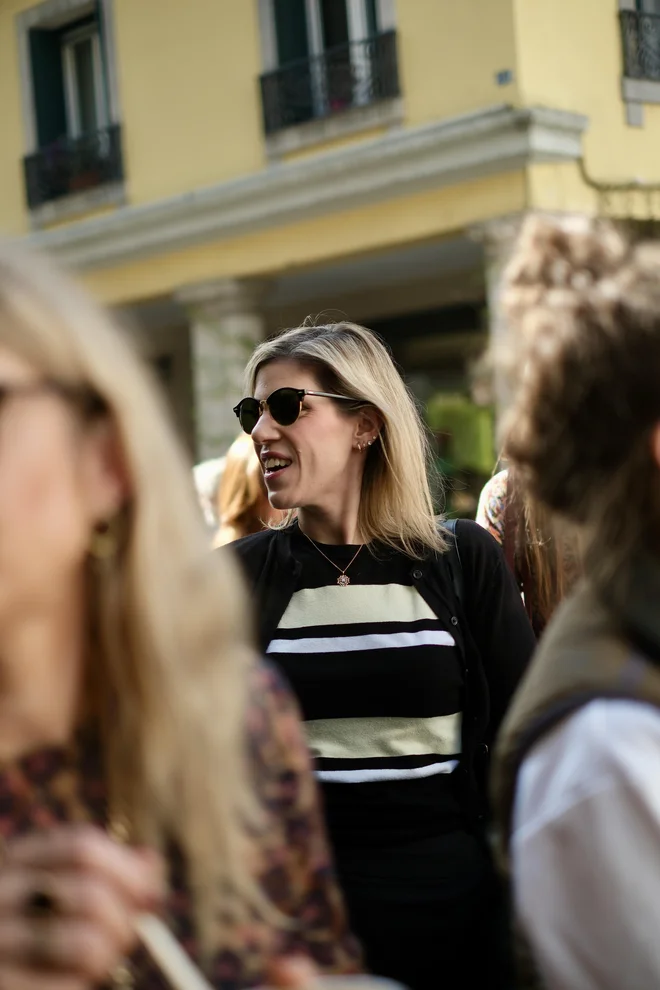
Manca Tersinic Photo: João Wengorovius
Kostanjevica and a small town of Spessa
“With its beauty, Kostanjevica itself, also known as a chapel, is always inspired by it, as a Franciscan monastery stands at the top of the hill. On the one hand, there is a view of the old and from the other to Nova Gorica. It is at the same time a religious sign and a historic point, because it is buried here – this is well known – the last French king from the Bourbon Dynasty, « says Manca Tersinic. This place has another unofficial name: Little Saint-Denis.
Next to the king Karl X. In the crypt of the monastery, which dates back to the 17th century, lies the remains of some other members of the French royal family, who was driven from the homeland at the revolution. After Scotland and Prague, shelter was found with Count Coronini in Gorizia. “The library is also interesting John Skrabecwhich holds 10,000 books, including a few dozen incunabules. However, there is an unforgettable collection of antique roses of the Burbon, which bloom in late spring, ”continues Tersinic.
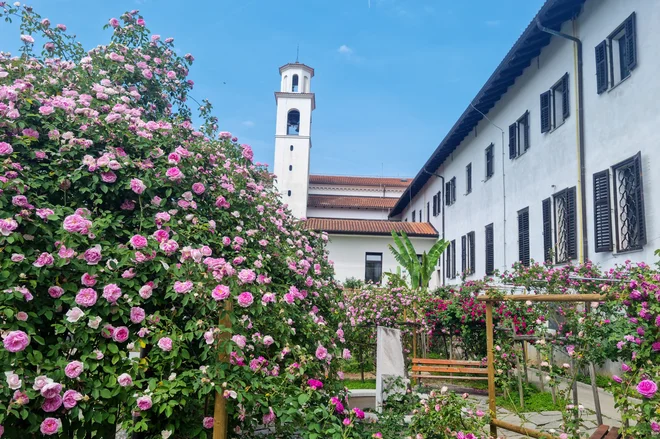
In the garden of the Franciscan monastery Kostanjevica in Nova Gorica is a plantation of Burbonk roses, one of the largest in Europe. Photo: Marko Feist
There is another castle nearby: just a few kilometers from Gorizia, on the way to Krmin, where we would drive, for example, if we went to Vipolže, the Gradic is Spessa. Marjana Grčman, Which she mentioned begins with modern attractions, saying they have a wonderful golf course. “I have returned twice lately. Really decent: you drink sparkling wine, you sing something, walk around the park. Price not so high. Beautiful, castle environment.
Here he lived here too Giacomo Casanova. » Probably studied algebro? … Haral Babe did here too, he did it. « And really: probably a little romanticized history, he recounts that since September 1773 he lived here for months, until he and his host, the then owner, were bad because of the handsome widow who cloned – and every night – before the first one. Truth be told, however, there was also quite a scholar in the famous lover, so that in peace he surrendered to thinking about various topical topics. He devoted some pages to his stay in this mansion in his most famous part of the story of my life.
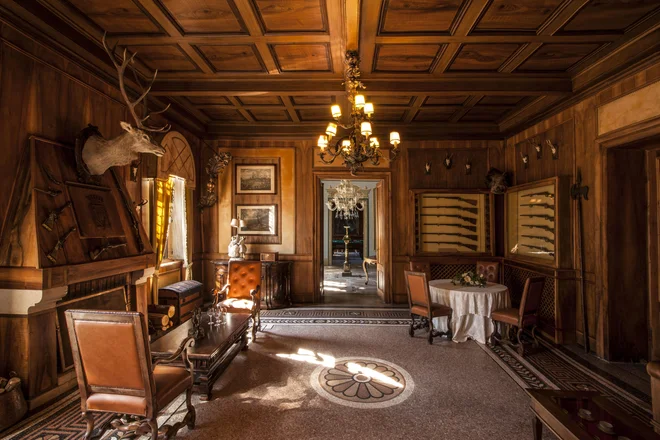
At Spessa, which stands just a few minutes from the two mountains, we dive into the love intrigues of the famous Casanova. Or we play golf what we snack in … Photo: Castello di Spessa Archive
Museum at the border: smugging and split cemetery
“I would also choose a museum collection that is on display at the former customs office on Pristava And it is dedicated to the tiny smuggling, and it is not portrayed as a criminal activity – and people did not understand it as well – but as a need and part of the normal life of the inhabitants in places that were artificially distributed. The Slovenes smuggled in Italy mainly meat, eggs, dairy products, and brought back mainly coffee. This time in Yugoslavia, this time was burdened with high tax and therefore more expensive, « explains Manca Tersinic.
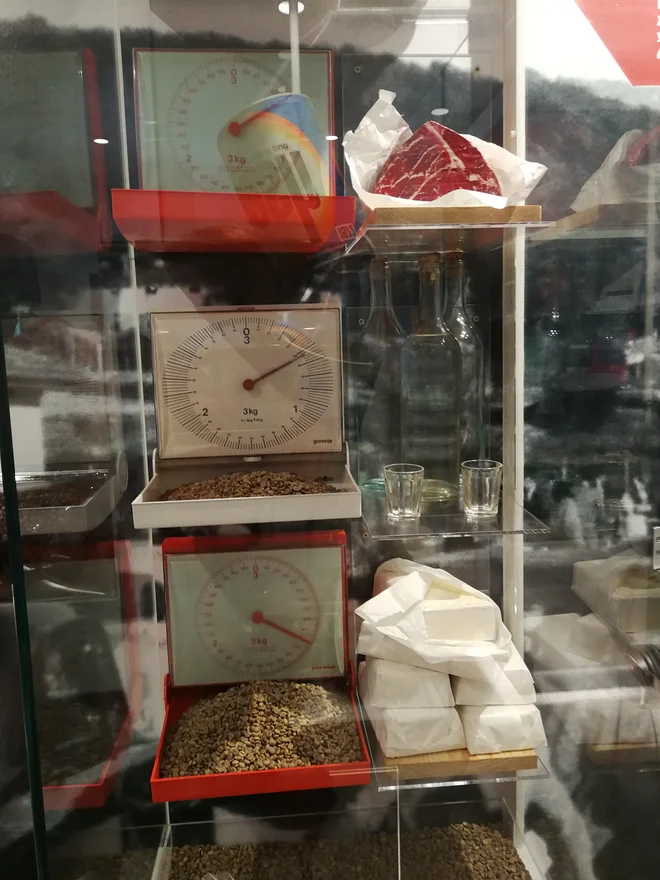
The border museum, with its four permanent collections, testifies to the everyday life of people who lived right next to the border. The trade vein did not stop. Photo: Karina Cunder Reščič
Marjana Grčman also highlights the exhibition at the Šverc, and he mentions another one, which, along with this and two others, is one of the permanent collections of the Museum of Gorizia, called the museum on the border: Miren. It is an outstanding story of the cemetery, which was cut and distributed between Yugoslavia and Italy in 1947. As they wrote in the Museum of Gorizia: « There was a restlessness into the eternal peace of the cemetery. » « Do you imagine? The deceased had his feet in one country suddenly and his head in another country? ”Exclaims Marjana Grcman. In the explanation: This unusual woman, full of life, is in fact a collector of national goods related to how we treat death in our culture.

Cemetery in Mirno, which was cut into two parts by the border. Some deceased were headed in one country in another country. Photo: Blaž Samec
Last year, she organized a remarkable concert in Pivka – an evening of morgue tunes. With every other person, this would be morbid, and with this lively woman, it works as it really is – part of the whole story that we usually drive away. That’s why she mentions another of her wish: “I would like to go with the Lord Blessed Kosovel After the cemeteries Both Gorizia. ”He is a researcher who was dealing with the issue of a former large cemetery who served to Stara Gorica and was referred when Nova Gorica began to grow. The deceased, who had no relatives to dug them, remained there until they became victims of this or that construction site. There are still three tombstones in the center of Nova Gorica, which are the least forgotten because they were – the most forgotten.
Where to eat
What to eat a tired traveler when he comes to these places. Manca Tersinic and Marjana Grčman both recommend the Alla Luna Inn, in Stara Gorica. We started describing in the open kitchen some time ago: “The center of Gorizia is Piazza della Vittoria. Slovenians still call it meadow today, because many years ago the market was just that, a simple grassland.
In 1876, the Alla Luna Inn (at the Moon) was opened in nearby street, and for the last seven decades, with great respect for tradition and old recipes, the Pintar family has been led. Now there are two ladies at the head of the moon: Mom Celestina and daughter Elena. ”Look at the photo: If you are not impressed Felix Jermann From the famous winemaking family, and an eclectic set of dishes – certainly no one is left indifferent to the interior of this restaurant.
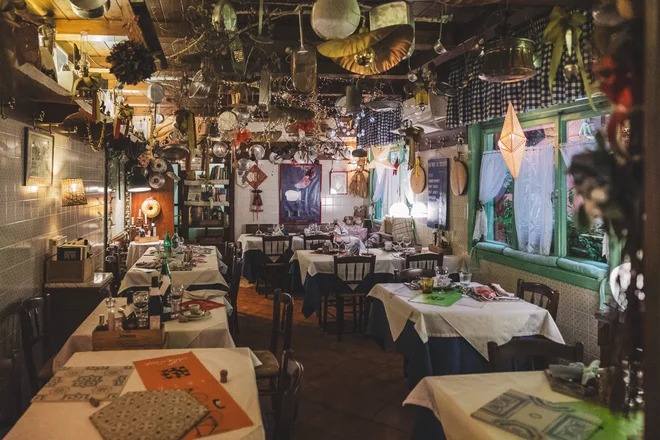
The Alla Luna Inn in Gorizia is just climbing popularity, on both sides of the border. Photo: Črt Piks
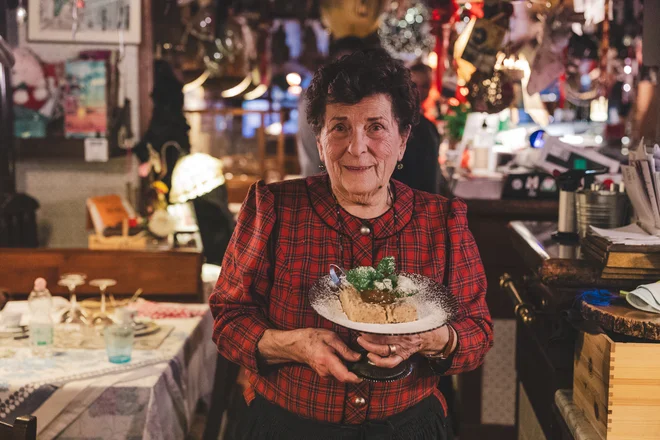
The Alla Luna Inn is run by the Pintar family, and the guests are received by the mother and daughter, Celestina (in the photo) and Elena. Photo: Črt Piks
On the Slovenian side there is a place of friendly people Osterija Žogica, a little outside Nova Gorica, in Solkan. For those of you who come to the fine dining, there is a given, on the Italian side, a little further, in Krmin, the famous Trattoria al Cacciatore. But the last two are Mišelinke and more for a dedicated trip, not, for example – or at least very difficult – to crawl them in one day with a cultural event and tourist tour of the city.
Anyone who will attend any of the events related to the European Capital of Culture in the next few months will surely wait a little, maybe take a long time, with some coffee. Manca Tersinic says that in Nova Gorica itself does this most often in the factory – which is at the same time clear where something can be eaten. On the Italian side, he tells, the culture leans more to such visits to the pubs, so that not only coffee is drunk, but a little average is gusting.
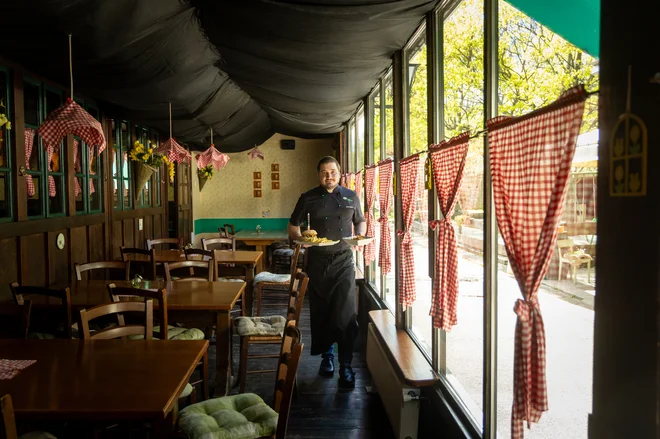
Another space of hospitality on the Slovenian side: Osterija Žogica in Solkan. Photo: Voranc Vogel
“On Sunday morning, everyone is on the aperitif: aperol, Campari, white syringe. They all eat lined bread, pizza, toast. In this sense, I can recommend the atmosphere of the Stu, where they have the best focals for my concepts. I love a combination of mortadel, burst and pistachio spread. You can find it opposite the Entourage Hotel, which was in the palace where Empress Sissi, when she was coming on vacation, on Piazza s. Antonio – accompanied by some hundreds of courtes, hence the name, « summarizes Manca Tersinic.
❝ I have an inn where there are sharps, which – consciously – sell a piece of your soul. Those who understand you so much that they put food in front of you without asking you what.
– Marjana Grčman
Where to drink
Both end up with a topic that is inextricably linked to these places: wine. Manca Tersinic points to a recent acquisition: there is no kind of wine bar with food, perhaps we can say farm tourism, a few kilometers from Gorizia, near the village of Gardisciut, on the Italian side. Slovenian roots present. It is also a show of well -known wine cellars in our country Franco TerpinAnd he is silent leads by his daughter. Who likes the way in Kobarid Walter Kramar He will lead Polonko, he will surely enjoy here. Of course, these natural wines are at the forefront, but there is a lot of Slovenian things to do, including beer.
Marjana Grčman, however, concludes with a story that may best illustrate places that she herself says are marked by people who have a Mediterranean in their hair. “I like inns where there are sharps, which – consciously – sell a piece of your soul. Those who understand you so much that they put food in front of you without asking you what. I just give everything together: cafes, pubs, bees … For me, these are hospitality spaces.
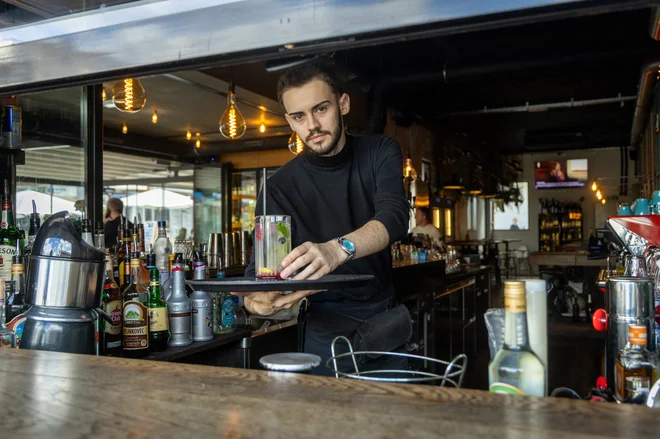
Eager coffee? In the center of Nova Gorica, the locals go to the factory. Photo: Voranc Vogel
And one of them, the inn that is not, is the quarry on the outskirts of Solkan, where after a fire in the Karst wine Marinko Pintar shifted their barrels. When we came to shoot, in the middle of a quarry, in the middle of a rough industrial environment, a round table was turned with a white tablecloth. He brought a whole reel of cheese from the Soča River, cut it in front of us in half. He put his gown glasses on the table, poured his wonderful wine into them. It was Monday, but it was suddenly the greatest Sunday of all time for us.
Marinko Pintar has a mastery that I often miss in young tourist workers. It interweaves respect, optimism and kindness to life. ”Pintar realized relatively late how much he wants to make wine – but it’s never too late. In this spirit, he also began: he began to collect and rescue the grapes from the vineyards, which were abandoned. The UOU brand was created, it was a VOL, and the wines are also extremely reputable in oenological silence. Lord is the only real word, really.

Marinko Pintar (UOU Wine) is a man who can make Sunday Monday. Photo: Stojan Femec

